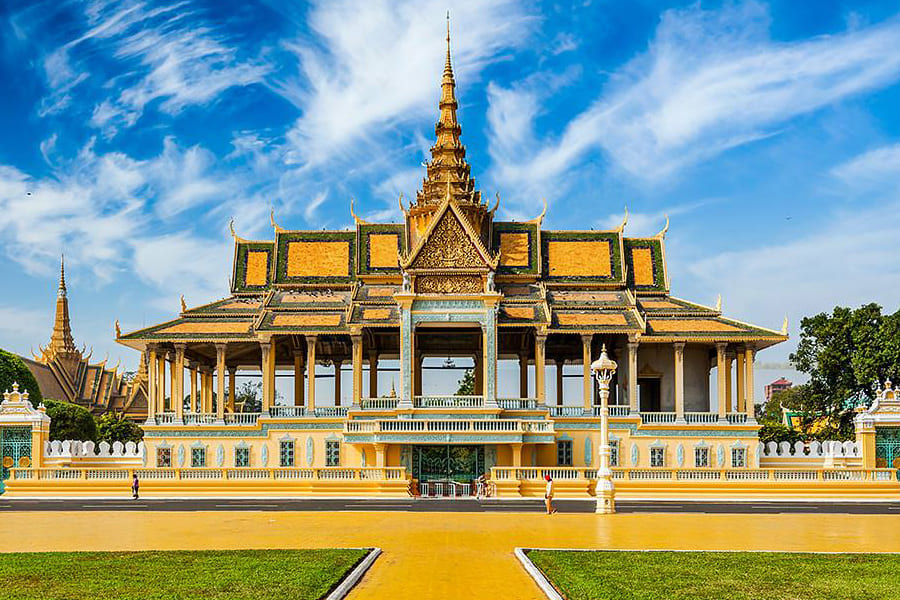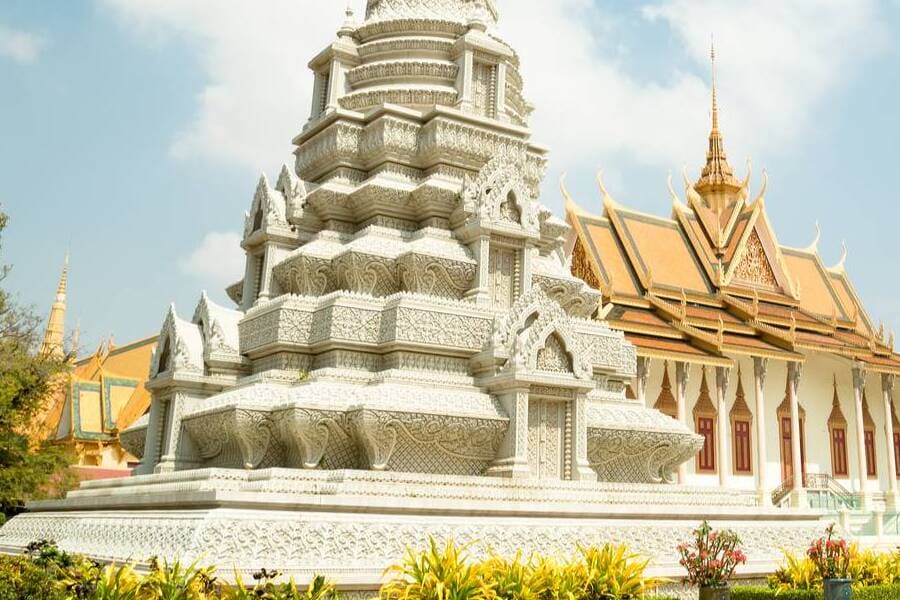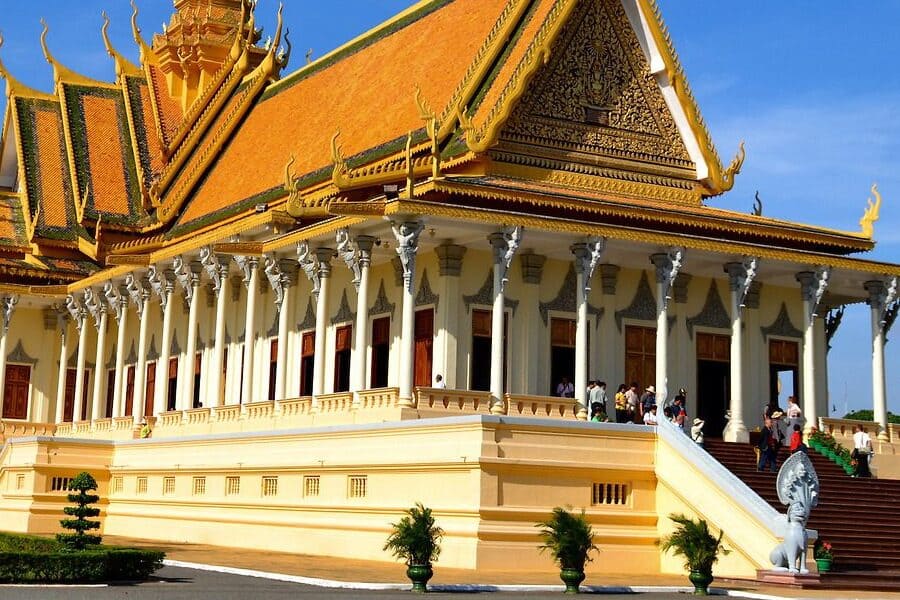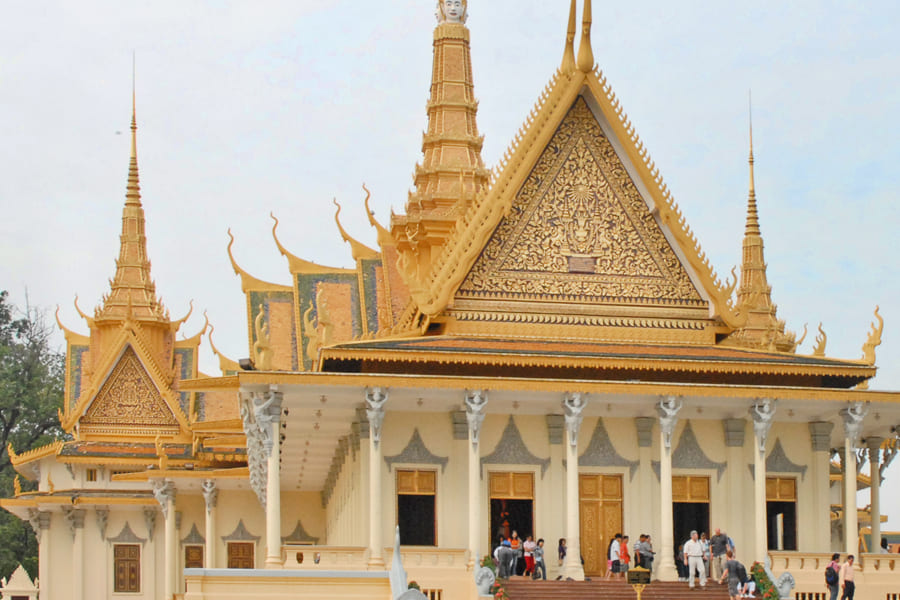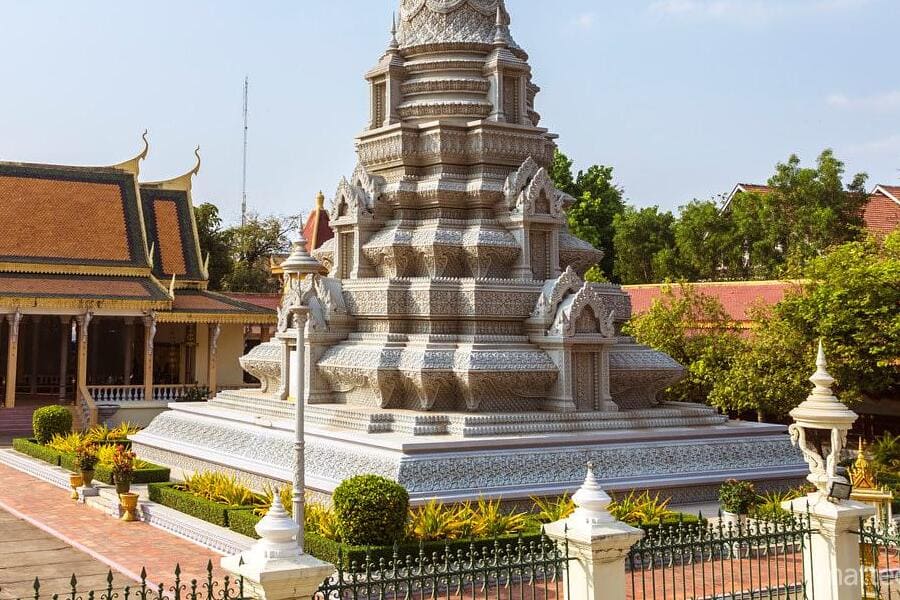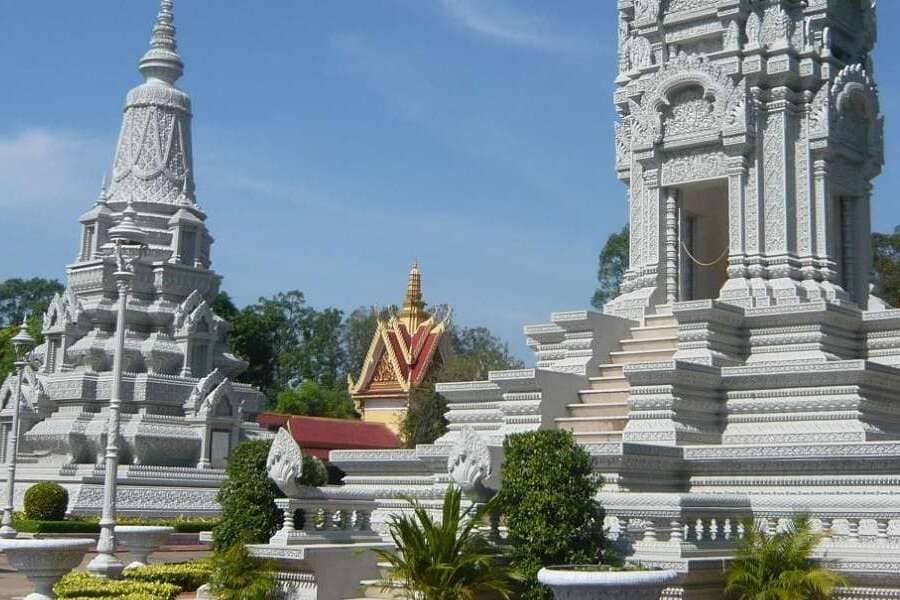Phnom Penh, the vibrant capital city of Cambodia, is a treasure trove of history and culture. Nestled at the confluence of the Mekong and Tonlé Sap rivers, this bustling metropolis seamlessly blends ancient traditions with modern life. At its heart lies the majestic Royal Palace, an exquisite example of Khmer architecture, where the gleaming Silver Pagoda dazzles visitors with its floor inlaid with over 5,000 silver tiles. These iconic landmarks, along with numerous temples, museums, and bustling markets, offer a glimpse into the rich heritage and dynamic spirit of Phnom Penh.
Contents
An Overview of Phnom Penh
Nestled at the confluence of the mighty Mekong, Tonle Sap, and Bassac rivers, Phnom Penh emerges as a vibrant jewel amidst Cambodia's rich tapestry of history and culture.
As the capital city of the Kingdom of Cambodia, Phnom Penh beckons with its enchanting blend of ancient traditions and modern vitality. Here, where the waters converge, lies the beating heart of the nation, a bustling metropolis teeming with life, energy, and boundless possibilities.
From its storied past as a royal capital to its present-day status as a thriving urban center, Phnom Penh captivates visitors with its picturesque riverfront, historic landmarks, and warm Khmer hospitality.
As the gateway to Cambodia's past and future, Phnom Penh invites travelers to embark on a journey of discovery and exploration, where every corner reveals a story waiting to be told.
The History of Phnom Penh
Phnom Penh's history is a rich tapestry woven with threads of ancient civilizations, colonial influences, and the resilience of its people. Founded in 1372 by the legendary Khmer king Ponhea Yat, the city initially served as the capital of the Khmer Empire before it was relocated to Angkor. However, it wasn't until the 19th century under the reign of King Norodom I that Phnom Penh regained its status as the capital, marking the beginning of its modern era.
Throughout its history, Phnom Penh has been shaped by various cultural influences, notably from neighboring countries and European colonizers. During the French colonial period in the 19th and early 20th centuries, Phnom Penh underwent significant urban development and architectural transformation, leaving behind a legacy of colonial-era buildings and boulevards that still grace the cityscape today.
Despite periods of turmoil, including the devastation wrought by the Khmer Rouge regime in the 1970s, Phnom Penh has emerged as a resilient and vibrant city, embodying the spirit of Cambodia's cultural heritage. Today, the city pulsates with life, blending ancient traditions with modern aspirations, as seen in its thriving arts scene, culinary diversity, and dynamic street life.
Must - visit Destinations in Phnom Penh
The Royal Palace and Silver Pagoda stand as iconic symbols of Cambodia's rich cultural heritage, nestled within the heart of Phnom Penh, the nation's capital. Steeped in grandeur and history, these architectural marvels offer a glimpse into Cambodia's royal past and spiritual traditions. Integral to many cambodia tours, these sites captivate visitors with their intricate designs and profound historical significance, making them must-visit destinations for anyone exploring the country's cultural landscape.
Explore the Khmer architecture at Royal Palace
The Royal Palace, a dazzling testament to Khmer architecture, serves as the official residence of the King of Cambodia and a symbol of the monarchy's enduring legacy. Its golden spires, ornate facades, and manicured gardens evoke a sense of majesty and splendor, welcoming visitors to explore its hallowed halls and regal courtyards.
The History of the Royal Palace in Phnom Penh
The history of the Royal Palace in Phnom Penh is intertwined with Cambodia's royal lineage and political legacy. Construction of the Royal Palace began in 1866 under the direction of King Norodom, marking the establishment of Phnom Penh as the capital city of Cambodia. The palace complex served as the official residence of the royal family and the seat of Cambodia's monarchy.
Throughout its history, the Royal Palace has played a pivotal role in Cambodia's political landscape, serving as the backdrop for significant events, ceremonies, and diplomatic functions. It has witnessed periods of prosperity, political upheaval, and foreign occupation, reflecting the nation's resilience and enduring monarchy.
Despite facing challenges such as damage during the Khmer Rouge regime in the 1970s, the Royal Palace has been meticulously restored and preserved, ensuring its status as a symbol of Cambodia's cultural heritage and royal traditions. Today, it remains a focal point of Phnom Penh's architectural landscape, welcoming visitors from around the world to marvel at its splendor and historical significance.
The Architecture of the Royal Palace in Phnom Penh
The architecture of the Royal Palace in Phnom Penh is characterized by its exquisite blend of traditional Khmer design elements and French colonial influences. The palace complex features a series of ornate buildings, pavilions, and courtyards set amidst lush gardens and manicured lawns.
One of the most striking features of the Royal Palace is its soaring golden spires and gilded rooftops, adorned with intricate carvings and ornamental details. The palace buildings are constructed using traditional materials such as wood, stone, and stucco, with elaborate decorative motifs inspired by Khmer mythology and religious symbolism.
Within the palace grounds, visitors can explore the Throne Hall, a grand ceremonial hall used for state events and royal receptions, as well as the Silver Pagoda, a sacred temple adorned with silver floor tiles and housing a precious collection of Buddhist artifacts.
The architecture of the Royal Palace reflects Cambodia's rich cultural heritage and royal traditions, embodying the nation's spirit of resilience, elegance, and enduring monarchy. As a testament to Cambodia's historical legacy, the Royal Palace stands as a timeless symbol of the kingdom's past and present.
Explore Buddha statues at Silver Pagoda
Adjacent to the Royal Palace lies the Silver Pagoda, a sanctuary of serenity and spiritual reverence. Named for its gleaming silver floor tiles, the pagoda houses a magnificent collection of Buddha statues, relics, and precious artifacts, including a life-sized gold Buddha adorned with thousands of diamonds.
The History of the Silver Pagoda in Phnom Penh
The Silver Pagoda, also known as Wat Preah Keo Morakot, is a sacred temple located within the grounds of the Royal Palace in Phnom Penh, Cambodia. Its history is intertwined with Cambodia's royal lineage and spiritual traditions.
The Silver Pagoda was originally constructed in the 19th century during the reign of King Norodom, but it underwent several renovations and expansions over the years. Its name, the Silver Pagoda, derives from the 5,000 silver tiles that adorn its floor, creating a shimmering effect under the sunlight.
Throughout its history, the Silver Pagoda has served as a place of worship and reverence for Cambodia's monarchs and the Buddhist community. It houses a precious collection of Buddha statues, artifacts, and religious relics, including a life-sized gold Buddha statue adorned with over 9,000 diamonds.
Despite facing challenges such as damage during the Khmer Rouge regime, the Silver Pagoda has been meticulously restored and preserved, ensuring its status as a cultural and religious landmark of Cambodia. Today, it continues to be a place of pilgrimage and spiritual significance, attracting visitors from around the world to marvel at its beauty and historical significance.
The Architecture of the Silver Pagoda in Phnom Penh
The architecture of the Silver Pagoda reflects a harmonious blend of Khmer and Buddhist architectural styles, characterized by its elegant design, intricate detailing, and ornate decorations.
The main structure of the Silver Pagoda is built upon a raised platform and features a multi-tiered roof adorned with gilded ornaments and sculptural elements. Its façade is embellished with delicate carvings depicting scenes from Buddhist mythology and Khmer folklore.
Inside the Silver Pagoda, visitors can admire the exquisite craftsmanship of its interior, which is adorned with intricately carved wooden panels, gilded statues, and colorful murals depicting Buddhist motifs. The highlight of the pagoda is the Emerald Buddha, a sacred statue made of Baccarat crystal and dating back to the 17th century.
Surrounding the Silver Pagoda are beautifully landscaped gardens, stone pathways, and tranquil courtyards, creating a serene and contemplative atmosphere for visitors to explore and admire.
The architecture of the Silver Pagoda stands as a testament to Cambodia's rich cultural heritage and spiritual traditions, embodying the nation's devotion to Buddhism and reverence for its royal lineage. As a revered sanctuary and cultural treasure, the Silver Pagoda continues to inspire awe and admiration among visitors to Phnom Penh.
Phnom Penh, with its rich tapestry of history and culture, stands as a captivating destination for travelers. The Royal Palace and Silver Pagoda, among other historic sites, offer profound insights into Cambodia's regal and spiritual heritage. Exploring these landmarks allows visitors to deeply connect with the essence of Cambodia's past and present, making Phnom Penh an essential stop on any journey through this enchanting country.


